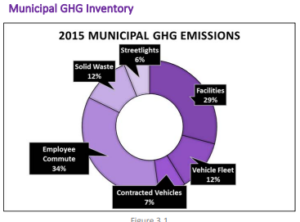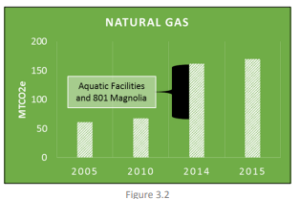Jun 19 2022
Civic spaces and places are what makes a community.
The Housing Element is not a policy direction to explore ideas … it is focused on delivering sites for development, the feasibility of which has already been established.
Putting the Vista tennis courts where the high school students play on the chopping block, potentially jeopardizing the viability of vitally needed police and fire station retrofitting, removing the Piedmont Center for the Arts, and putting housing on the Highland Green that serves as the 4th of July parade staging area are extraordinary steps that are in the Housing Element that the community is not aware of, and potentially hugely destructive to the community fabric. The City needs to slow down process and more thoroughly analyze these proposals and get community feedback before the element is forwarded to the State.
The City can both protect its civic spaces and accommodate it housing needs in a thoughtful manner. It doesn’t have to be one or the other. By preserving our public and recreation spaces, Piedmont would also be preserving these for the enjoyment of new residents.
The Piedmont Housing Element should be set up for success, rather than failure, and include actual sites where the City can fulfill its housing needs, rather than sink time and energy into sites where housing is unlikely. While including housing as part of the Civic Center is a noble sentiment, it is impractical in the timeframe of this Housing Element planning period, as I will discuss below. The City should be aware of the following State laws and other requirements, which among others require the City Council to make certain findings at adoption time that the City would not be able to responsibly make for the Civic Center sites:
STATE LAW REQUIREMENTS TO BE MINDFUL ABOUT FOR CIVIC CENTER SITES
Demonstrate Realistic Development Capacity at Designated Sites
Where there are existing uses, “..Existing Uses — The housing element must demonstrate non-vacant and/or underutilized sites in the inventory that can be realistically developed with residential uses or more-intensive residential uses at densities appropriate ….and evaluate the extent these uses would constitute an impediment to new residential development.” See https://www.hcd.ca.gov/community-development/building-blocks/site-inventory-analysis/analysis-of-sites-and-zoning.shtml. The City needs to show the community the analysis used to arrive at feasible housing capacity at existing civic uses and tennis courts. E.g., there is no housing feasible where the tennis courts are. The examples cited so far are of tennis courts on top of parking structures such as at UC Berkeley, which is very different than tennis courts on top of housing, that too affordable housing. The Housing Element is not a policy direction to explore ideas … it is focused on delivering sites for development, the feasibility of which has already been established.
Required City Council Findings at Adoption Time That Existing Uses Will be Discontinued
State law states that “If a housing element relies on nonvacant sites to accommodate 50 percent or more of its RHNA for lower income households, the nonvacant site’s existing use is presumed to impede additional residential development, unless the housing element describes findings based on substantial evidence that the use will likely be discontinued during the planning period. In addition to a description in the element, findings should also be included as part of the resolution adopting the housing element.”https://www.hcd.ca.gov/community-development/building-blocks/site-inventory-analysis/analysis-of-sites-and-zoning.shtml.
Thus at the time of Housing Element adoption, the City Council will have to make findings that the tennis and basketball courts at Vista and public safety uses at the Civic Center will be discontinued during the planning period (2023-2031). I do not believe it is possible to make this finding given that there are no plans to relocate these uses to other places, unless the City does not want high schoolers and other community members to play tennis or does not want police and fire departments. If the City Council does not believe this finding can be made, it is better to drop these sites now rather than finding that we are short on sites at adoption time.
Required Rezoning for Shortfall
The City would need to commit in its Housing Element to a process and timeline to make sites it owns available for residential uses. The draft Housing Element currently lacks this, and HCD would most likely want to see this detail included. Under the Housing Accountability Act, should housing not be feasible at a site and there is a shortfall mid-cycle, the City will have to proactively undertake a rezoning program to find sites elsewhere to make up for this shortfall. This means doing a Housing Element Update and EIR all over again mid-cycle in three or four years, and tying the City’s hand in being able to proceed with rehabbing the public safety buildings until alternative housing sites are in place. Thus, In designating the Civic Center sites I believe we are just kicking the can down two or three years, rather than solving any housing problems. We should be focused on finding and delivering those alternative housing sites to meet our housing needs and obligations now, rather than five years later.
CITY CHARTER
Reclassification of zones under the Piedmont Charter requires a vote of the people. If the City Council wants to reclassify the Public zone (which allows a de minimus one house at every parcel in the city) to permit high density residential and thus make this zone Public/Residential, this should be submitted to the voters and placed on the upcoming November ballot. Lack of legal certainty will not inspire confidence on part of any developers the City may wish to attract.
PHYSICAL FEASIBILITY OF SITES AT THE CIVIC CENTER
Not finding any drawings or information in the Housing Element on methodology to determine housing capacity at Civic Center sites, I sat down over the weekend and tried to understand this for myself.
Vista Tennis and Basketball Courts
Assumption in HE: Housing at 60 units per acre, 34 realistic housing units. The courts presently fill up the entire site. It is physically not possible to vertically integrate housing and whole bunch of tennis courts and bleachers on top of a residential building without extraordinary expense, and I am not aware of any examples in the Bay Area where this has been done. Tennis courts can go on top of parking structures as they have been at Cal for over three decades and industrial and office buildings, but not residential, as the building floorplate is entirely different. Is the proposal to remove tennis courts? The facilities were just renovated a year ago for something like $2 million. This idea does not seem even physically, let alone financially, feasible.
Center for the Arts
Where is the space for the five units? Will this be razed and replaced? Again, wasn’t this rehabbed a few years ago, and didn’t the City recently sign an agreement on this?
City Hall/Police/Veterans Building
The site area for this in the Housing Element includes City Hall, and the area is counted at 60 units per acre to calculate resultant housing. Neither tearing down City Hall, nor putting housing on top of it is a credible suggestion. The eastern half of the site is about 0.5 acres, and that is where the police and veterans building are located. It would be quite a structure that includes a new police station, rec. building, and 40 housing units (which, because of the small acreage, would actually be at 120 units per acre max) all at the same small site. It would require razing the existing facilities and starting from scratch, and be surely several multiples more expensive than the cost to rehab these, plus the higher cost for housing building and having the civic facilities support the resultant structural weight and complexity of housing above. Theoretically it could work if the housing can be on its own pad as staff mentioned for other examples they shared at the Planning Commission meeting, but looking at our site I don’t see any area where housing can just be squeezed in without messing with the existing buildings. Rehabbing the existing Veterans Hall and Public Safety buildings will also be a lot more environmentally sustainable and emit fewer greenhouse gases than razing these buildings and building something new, when the same housing can built more sustainably and be delivered to the community at lower cost by adding say one more story to the Mulberry/BofA site across the street, where housing is already planned, and provide an additional density incentive for the property owner to develop that site.
Highland Green
The width of this parcel during most of the stretch is 30 feet. With required front setback of 20 feet in Zone A, and rear setback of 5 feet, the remaining buildable width of housing would only be 5 feet. So, these sites are also physically not feasible. The loss of five units assumed here would not be that significant.
All of these sites are impractical given the dense fully built out conditions of civic facilities and the fact that we don’t any have vacant land there, and a distraction from the real work the City needs to do to deliver feasible sites.
PRACTICAL APPROACH TO MEETING THE CITY’S HOUSING OBLIGATIONS
I believe the most practical approach for the City to meet its RHNA is as follows, in order of importance:
• Count every housing unit (including ADUs) expected to be completed between July 1, 2022 and January 1, 2023. These units, under State law, can be counted toward both the 5th Cycle (in which we are) and 6th Cycle (starting in 2023), because of data projection period overlap.
• Count SB 9 Units. The City does not have a trend of these because the City has not allowed these in the past. With properly development rules and methodology, the City should attempt to have these counted now to bring the remaining need down, rather than just as Housing Element success stories later. There are many cities that have successfully counted these units, consistent with HCD guidelines.
• Consider densities that are much higher than currently contemplated at Grand and Highland avenues, while developing standards so that these are well designed, with ground level retail and cafes, and housing above. Densities of 180 units per acre with ground floor retail and four stories of residential above (60 feet building height), with structured parking may be appropriate for Grand Avenue, and 120 per acre for Highland Avenue. If necessary, the City should add a real architect with experience in doing projects like these in the Bay Area to the out-of-town planning team.
• Add missing middle housing (fourplexes, six-plexes, etc.) and smaller-scale multifamily development in some or many existing neighborhoods. Some of the City’s rules relating to allowable densities, lot sizes etc. may need to be modified. There may, again, be some City Charter issues involved, but these would be of lower magnitude than high density residential issues in Public zones.
• Continue counting all the remaining single family and religious sites with the good work staff has done, although it remains to be seen if HCD will buy off on allowing so many of these to be counted.
• Anything else needed should be added after the above has been done, and this remaining need would be modest.
Rajeev Bhatia, Piedmont Resident
Editors’ Note: Opinions expressed are those of the author.





